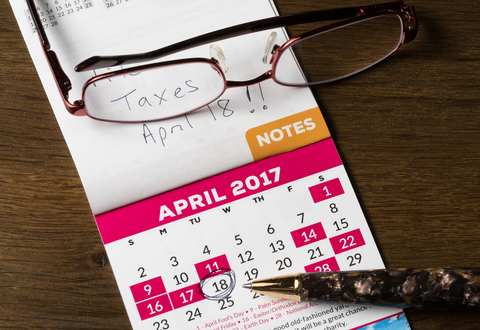 While the filing deadline for your 2016 federal income tax return isn’t until April 18, 2017, it’s not too early to take measures that will make this filing season a breeze.
While the filing deadline for your 2016 federal income tax return isn’t until April 18, 2017, it’s not too early to take measures that will make this filing season a breeze.
Don’t procrastinate; take things one at a time to make this filing season easy and successful for you.
1. Collect your information returns.
The income, deductions, and credits reported on your return are taken from information returns sent to you — and to the IRS — starting at the end of January (depending on the form).
Look for:
- W-2s to report your wages, salaries, commissions, and taxable fringe benefits
- 1095s to verify your health coverage
- 1098s to report mortgage interest and tuition payments
- 1099s to report interest, dividends, and securities transactions
- Schedules K-1 to report your share of income from partnerships, S corporations, trusts, and estates
2. Collect your deduction receipts.
If you itemize, you’ll need written acknowledgments form charities for donations of $250 or more (or bank/credit card statements showing smaller donations). You’ll also want to collect receipts for other deductible items, such as out-of-pocket medical costs.
3. Take last minute action.
While 2016 is over, there’s still time to take certain actions to reduce your 2016 tax bill. Consider making a deductible IRA contribution or a contribution to a health savings account if eligible. The deadline is April 18, 2017, whether or not you obtain a filing extension. If your child is a college student, consider not claiming a dependency exemption so your child can qualify for an education credit (assuming he/she has the income to benefit from it). This move can save your family taxes overall.
4. Determine how you’ll file.
Most tax returns are filed prepared and filed electronically, but you can still complete and mail a paper return if that suits your situation. If filing electronically decide whether to use:
- FreeFile software, which can be used if you’re income is below $64,000. FreeFile is operational on January 13th.
- Commercial solutions, such as TurboTax or Tax Act.
- Paid preparer, such as a storefront (e.g., H&R Block), a CPA, enrolled agent, or other tax professional. There’s a directory of tax preparers who’ve obtained their professional IDs for this filing season from IRS – find it here.
5. Tax refund: decide what to do.
If you think you’re getting a refund, it’s a good idea to file as soon as possible to get your money. But if the refund is from the earned income tax credit or additional child tax credit, no matter how early you file the IRS can’t issue the refund before February 15. You can use a refund to achieve a tax benefit, such as having the government send it directly to an IRA or health savings account, but be sure to tell your plan custodian or trustee whether to apply the money for 2016 or 2017. To split a tax refund, you’ll need to file Form 8888.
6. Decide how to make a tax payment if you owe it.
If you expect to owe taxes for 2016, think about how you’ll do this. You can charge the payment to a credit or debit card, but you’ll pay a steep convenience fee. If the bill is too large to handle at once, you can ask for an installment agreement. Be sure to note that interest and possible penalties begin to accrue on unpaid taxes starting April 19, 2017, even if you obtain a filing extension.
7. Think about getting a filing extension.
If you don’t think you’ll be able to do everything needed to file by April 18, be sure to get a filing extension. It’s yours for the asking; file Form 4868 and you’ll have until October 16, 2017, to file your return without a late-filing penalty.
8. Monitor tax developments.
Even though you’re ready to get started, the IRS has yet to release all forms, schedules, and other materials that may be necessary to optimize your tax results. Look for J.K. Lasser’s free online Supplement at jklasser.com for developments that may impact your 2016 return.
9. Look ahead.
It’s not too early to start thinking about 2017 taxes. You can adjust your wage withholding for the year by filing a new Form W-4. If you pay estimated taxes, the first installment for 2017 is due on April 18, 2017.
10. Take a lesson from the 2017 filing season.
As you proceed through this filing season, take note of what worked for you, and what didn’t. For example, if you struggled to find receipts, adopt a system for this year to collect and retain needed receipts to make next year’s filing season a snap.


